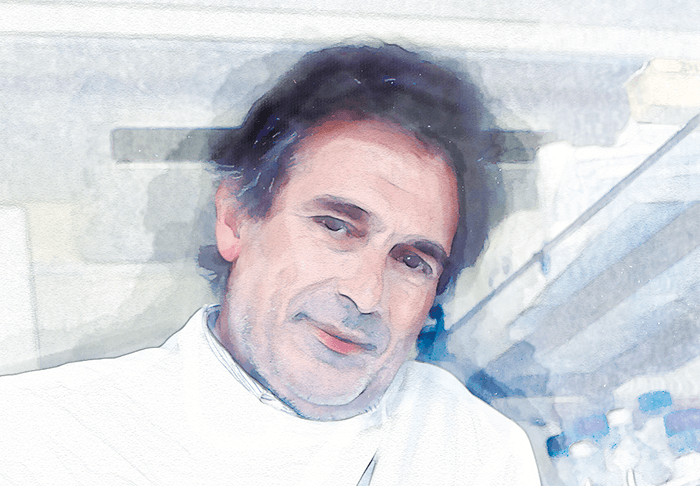
Last year we asked our readers who they believed were the most influential figures in pathology and laboratory medicine, and in November, after open nominations and judging by an independent, multidisciplinary panel, we celebrated the top 100 (1). And the number 1 spot? It was awarded to Manuel Sobrinho-Simões, founder and director of globally-renowned IPATIMUP (the Institute of Molecular Pathology and Immunology of the University of Porto), a man who was described by nominators as someone who “represents the perfect combination of scientific intelligence and nobility,” is “an educator par excellence,” and whose “contributions to the clinical diagnosis of thyroid cancer have been outstanding.” Here we speak with the pathologist who has taught and inspired thousands of students and made ground breaking contributions to the field of thyroid oncology. Manuel Sobrinho-Simões speaks with The Pathologist about his diverse and interesting career, his focus on education, his fears surrounding overuse of molecular and digital pathology. And he tells us what he still has to do…
Let’s start at the beginning… Why pathology?
My great-grandfathers, grandfathers, father and uncle were all medical doctors, so I never considered doing anything else. When I began studying medicine, I found myself drawn to pathology because I realized quite quickly that I didn’t want to be a clinician – I wasn’t interested in interacting directly with patients; I wanted to diagnose disease on an objective basis. Pathology was the best possible solution. I was very impressed by my Professor of Pathology (Daniel Serrão) and my interest lay quite firmly in human pathology.
How did the political situation in Portugal at the time affect your studies?
We had a strong political regime, which made it very difficult for students to undertake a PhD overseas – the government were convinced that you wouldn’t come back. So as students, it was generally accepted that we had to do our PhDs in our home country. This was a challenge for me, because I wanted to study human pathology – a subject that was only considered to be observational and not good science. I had some convincing to do! At the same time, the political situation was beginning to destabilize. A revolution was on the horizon and on April 25, 1974, 50 years of dictatorship was ended by army rebels on a day that was known as the Carnation Revolution. It was a very special time in Portugal; in a way, it was a little overboard – the freedom went to people’s heads and there was a lot of spending, a lot of excess. I was a slight leftist, so those changes weren’t very easy for me to deal with. Still, I have very good memories. Before the revolution, there were not many medical students – I would say between 60 and 80 per year. After 25 April, student intake increased to more than 1,000 per year. The situation reverted partially and, today, my medical faculty enrolls about 300 students per year.
I was able to convince the director of my department that by studying human pathology, I could solve a lot of problems and confirm diagnoses using a new, high-tech method – electron microscopy. That assumption was, I later discovered, a naïve one, but it allowed me to successfully gain approval to undertake my chosen PhD. I became the very first pathologist in my home city of Porto to do a PhD in observational human pathology.
Why did you choose to complete your postdoc in Norway?
I had a keen interest in electron microscopy. Jan Vincents Johannessen was an exceptional electron microscopist based at the Norsk Hydro’s Institute for Cancer Research in Oslo, so that was a huge draw, and in 1979–1980 I worked alongside him studying thyroid cancer and electron microscopy.

I then returned to Portugal to continue my career. By 1988, I became a full professor of pathology at the University of Porto. Through the course of my career, and even now, I have worked overseas for short periods. I always combined my profession with research, and I have always tried to teach. Why? Because I wanted to be as good a professional pathologist and as good a researcher as possible; not because I wanted to do research per se, but because I wanted to be a better teacher.
In 1989, you founded the Institute of Molecular Pathology and Immunology of the University of Porto (IPATIMUP). How did you go about securing funding?
That was difficult. By that time, we had realized that electron microscopy was not the magic bullet I had hoped it would be. We needed to prove to our government that we could use sophisticated techniques to do first-class research. Those sophisticated techniques were immunohistochemistry (IHC) and molecular pathology. Not only could we use them to improve our research, but with their help, we could improve patient care and diagnoses. People are talking a lot about translational medicine these days, but we were doing translational work from the very beginning!
I must confess that, at the time, pathology in Portugal was very prestigious because we had three very good schools for the subject. It was seen as an important discipline politically; some of the most brilliant medical students wanted to enter pathology. It’s not the same now, but that’s how it was then. I was not alone in convincing the government to part with funds – we had brilliant students, and between 50 and 75 percent of our team were faculty professors of the University of Porto who were volunteering their services for free. Which was fantastic; it was unique and it was lucky. We also had a brilliant Minister of Science who wanted to reinforce science and who was actually a little suspicious of the universities; he wanted to create solid research institutes. Luckily, at that time, the director of the University of Porto was a real visionary and he supported us too. We were able to convince the government that we could produce good science and that our science would have a direct, positive impact on patients. We had to demonstrate the value of our work from day one, and that was how we managed to secure all of the funds that we needed – 25 percent of which came from Portugal and the remaining 75 percent from the European Union – to build our institute. IPATIMUP was, and still is, a rarity in Europe, because of its focus on human pathology.
Everything fell into place and we quickly began to demonstrate how useful we were. It was a great success; the newspapers, TV and radio all loved us. In such a small country, having a big media presence was like advertising our work with a megaphone. We won the National Media Prize for Science in 1996. And for the first time ever, it was not awarded to an individual, but to a group – the “Professor Sobrinho-Simões group”. One thing that really helped us gain media attention was our communication with the public about health and disease – in particular, cancer. In Portugal, we have a low level of literacy. At the time of the revolution, literacy rates were similar to those of Sweden 120 years earlier! So it was not easy to communicate scientific information to the public, but we managed to do it in such a way that we taught the country that cancer was a chronic disease, that it needed to be diagnosed early, that it was treatable, that it could be prevented, and that it was not a death sentence. Our constant presence in the public eye and our internationally competitive research secured our future.
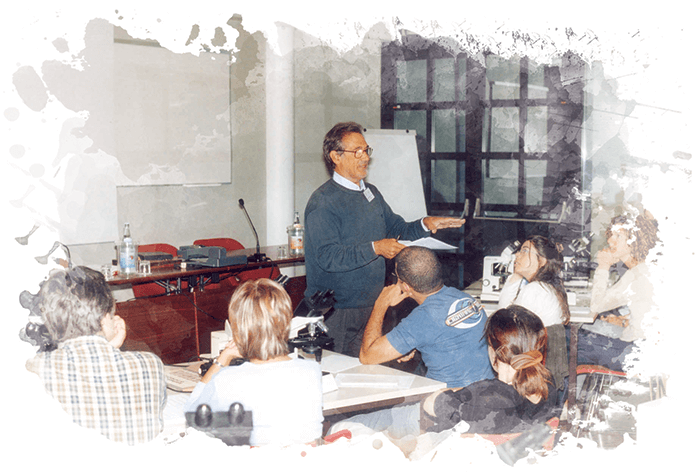
Why did you focus research on thyroid and gastric cancers? And what are the institute’s biggest achievements?
The prevalence of both of those cancers is very high in Portugal in comparison to other countries, but neither was widely researched at the time and we were able to become experts in both fields. From 2008 to date, the University of Porto has been one of the top five global institutes by number of citations in thyroid and gastric cancers and this is because of IPATIMUP’s influence over the university hospitals and cancer institutes. In my opinion, this is our biggest collective achievement.
Another rewarding accomplishment for us was that we were able to create, together with the Cancer Hospital, the Porto Comprehensive Cancer Center – the only one in Portugal and one of a very small number in the Iberian Peninsula.
Scientifically, we have published many good papers. For example, we were the first to establish that the most frequently occurring thyroid and endocrine cancer in humans – papillary thyroid carcinoma – often has a BRAF mutation (2). Two years ago, we found another mutation in thyroid cancers; this time, in the promoter of the TERT gene (3). You could say we are responsible for finding two of the most frequent genetic alterations in thyroid carcinomas. We were also the first group to find a genetic germline alteration in a special type of cancer known as Hürthle cell tumor (4). Finally, because of our focus on translational research and human pathology, we were constantly collecting information on the relationship between genotype and phenotype, and in 2006 we published a paper redefining the existence of two major subtypes of thyroid papillary carcinoma, one of which was similar to follicular carcinoma (5). More recently, using high throughput technology and NGS, The Cancer Genome Atlas Research have managed to confirm our findings of 2006 (6). I now do more than 200 consultancy cases of rare thyroid cancer each year from around the world, and I do them for free. These cases are great, because they are triggers for research.
In stomach cancer, two of my colleagues – Fatima Carneiro (also named on The Pathologist’s 2015 Power List) and Raquel Seruca – are considered among the world’s top experts in hereditary diffuse gastric cancer. They discovered the mechanism, the interaction between mutations and the microenvironment including the role of H. pylori, and more. They are asked to consult on cases of diffuse gastric cancer from around the world.
It’s very difficult to extrapolate information from animal models. For years we just focused on human molecular pathology, and that’s what has allowed us to become leaders in our fields. Furthermore, most of our research achievements have been the result of multidisciplinary collaborations with global researchers.
In 2007, we joined forces with the University of Porto and two biomedical and life sciences research institutes to build a new institute that is linked with IPATIMUP – the i3S (Institute of Research and Innovation in Health). IPATIMUP is 4,000 m² and now with the Institute, we have an additional 14,000 m² containing about 600 researchers. This is in the middle of the university hospital, the cancer hospital and medical faculty campus, so we probably have one of the best health campuses in Europe. I’m very proud of that. It’s a unique opportunity to translate our research into benefits for patients.
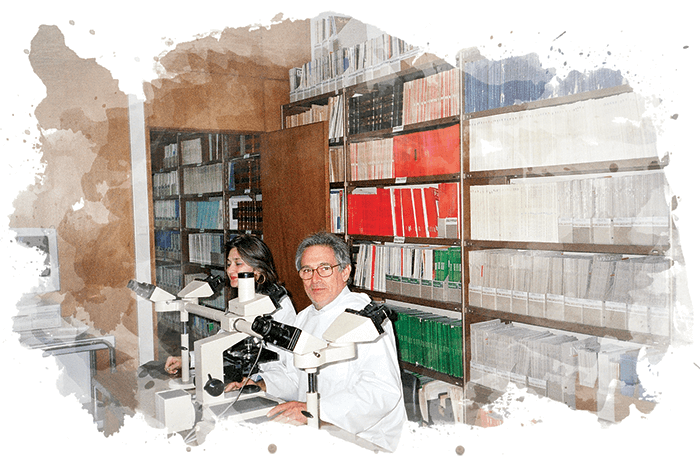
What have been the biggest evolutions in pathology since you began practicing?
After the introduction of immunohistochemistry there have been a lot of changes, mainly on two levels. Our ability to conduct genetic analysis on large numbers of samples at such high speeds and at relatively low costs, and our integration of digital technology.
You call molecular pathology a double-edged sword. Why?
Don’t get me wrong, it is a fantastic field! But it’s very difficult for classically trained pathologists to understand all of the new molecular techniques – and many of them are afraid. It’s an intimidating prospect, so they aren’t trying to use molecular pathology. And this is bad, because they need to. Conversely, some people think that molecular pathology is the answer to all of our diagnostic questions – and it’s not. Though we’re discovering more and more about the molecular nature of disease, the diagnosis of cancer is still based on morphology and topography. It has to be. So this is why I think of molecular pathology as a double-edged sword; because it holds a lot of promise for the future (if we can get pathologists to participate), but it should not be regarded as all-powerful.
I must stress the danger of overdiagnosis in cancer and precancerous diseases. The development of all sorts of sophisticated imaging techniques and the excessive belief in the importance of molecular alterations is already leading to overdiagnosis and overtreatment. I find it noteworthy that we have needed to create acronyms like VOMIT (victims of modern imaging technology) and the concept of IDLE lesions (indolent lesions of epithelial origin) for in situ “cancers” and extremely low-aggressive malignant neoplasms. In 2003, we had a meeting in Porto with Dillwyn Williams, Juan Rosai and Virginia LiVolsi, during which we established the so-called Porto proposal, which suggested the name papillary microtumor as a replacement for papillary microcarcinoma (of the thyroid).
I would urge caution with liquid biopsies too; specifically the way that the data is used from these tests. The study of primary tumors and their metastases needs to include a detailed description of the tissue heterogeneity, together with topography. Cancer is, by definition, invasive. It does not respect frontiers and therefore can only be diagnosed with morphological (and/or imaging) methods. A gene alone cannot diagnose cancer or highlight invasiveness and I think the same will continue to be true in the future. The over-evaluation of molecular genetics is dangerous in this context. On the other hand, if we don’t integrate molecular and gross testing techniques, we will lose ground to other disciplines. Our approach to diagnosis must intelligently integrate both.
Further, with our better understanding of genetics and continuously improving technologies, we are increasingly able to access huge amounts of information. This does present a problem, though; it is difficult to reconcile all of this information with actual cases. We still have a gap. Bioinformatics is a weak point within our institute – we have a limited capacity to handle all of the information we can obtain, and I don’t know how we are going to solve that problem. We were a little bit naïve in the beginning because we thought that looking at genes would solve everything – but that’s not true. Many diseases don’t depend on genes per se, they depend on epigenetics and environmental factors. We still don’t have enough understanding of the epigenetic influence on disease.
And you’re not a big fan of digital technology?
Personally, I am ambivalent. I don’t even own a cell phone, so that proves to you that I am a traditionalist. That extends to my work as well – I prefer to use my microscope. Many people agree that they feel more secure behind the microscope, especially those that were trained classically. It’s quicker and easier for us to make a diagnosis that way than by using a computer. My biggest concern with digital pathology ties in with the fact that, globally, we are suffering from a shortage of pathologists. With the support of digital technology, I’m afraid that we might have fewer pathology departments within hospitals, and more digital pathology supercenters around the world, in countries where it’s cheap to run them. Digital pathology has the potential to contribute to the decline of our profession. And that would be a disaster!
Don’t get me wrong, I do see benefits to using it. I believe it will solve many problems – in particular for remote laboratories that are unable to conduct certain tests or that don’t have the resources. But digital tools should be controlled and used effectively. When testing DNA or RNA, for instance, it’s very important to have control over the preanalytical phase, and that is lost when you outsource the analysis. I wouldn’t use digital pathology for surgical specimens, either. I still believe that to study cancer specimens properly – because it’s a disease that needs an integrated, multidisciplinary approach – we need to use traditional techniques. To do that, pathology needs to be within the hospital.
You say you’re concerned about losing pathology departments…
That’s right. Subspecialization will drive the loss of pathology departments, in my opinion, where, for example, the gynecological pathologist is simply integrated into the gynecology department. I fear that we will lose our unity and our visibility as a result. Perhaps of even more concern, is the fact that this consequence would damage our chances of providing the best personalized medicine to our patients. In-house pathologists promoting the intelligent use of tissue and tumor banks will become increasingly more essential for the delivery of personalized medicine in oncology; and such banks should, I believe, belong to pathology departments.
In Porto, thankfully, we’re currently not at risk of this because pathology is still viewed as the most important discipline in the medical curriculum. We are lucky. I currently teach pathology at the medical faculty of Porto, as does my colleague Fatima Carneiro, and our pathology courses are exceptionally strong. But I see subspecialization causing problems in other countries and in the future.
We’re also seeing public universities and hospitals losing pathologists to private labs. Why? Better salaries. This is also a big problem.
How can this be avoided?
Three things need to happen. One, we need to pay our pathologists more – the workload is high and the compensation does not reflect the complex and demanding nature of the profession. Our pathologists contribute so much and we should make sure they’re happy. Two, we need to better reward research. And three, we need to be more visible as a profession.
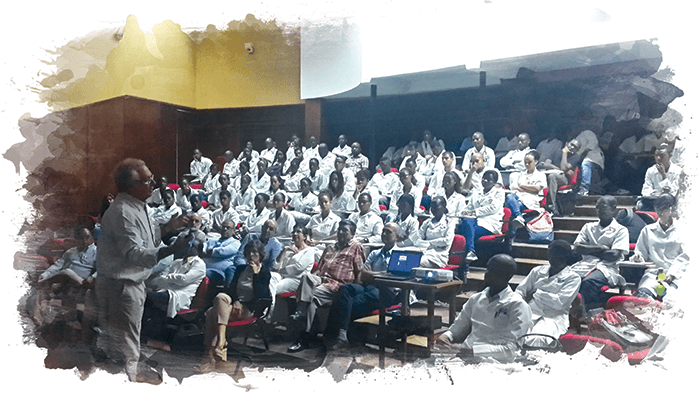
Pathology is still a prestigious profession in Portugal. How can other countries follow suit?
Through the mobility of the pathologists trained in good overseas institutions who return to their home countries or circulate around the world. We train a lot of people from Portuguese-speaking countries like Brazil and Mozambique, as well as people from Spanish-speaking countries, and these people move around. Take another of the people named on the Power List as an example, Jorge Reis-Filho; he is a brilliant pathologist who trained with us and is now based at Memorial Sloan Kettering Cancer Center in the United States. We need pathologists to spread their influence around the world. Pathologists should be role models as professors in medical faculties and as clinically-oriented, physician-scientists in hospitals. This is why I have been so focused on the European School of Pathology. I started collaborating with the European Society of Pathology (ESP) as co-editor of their newsletter in 1980. After having chaired the Advisory Council from 1985–1989, I was Secretary from 1989–1997 and served as President from 1999–2001. As officer of the ESP, I helped Jean Alexis Grimaud to create the EuroCellPath (European Courses in Cellular Pathology) and Gianni Bussolati and Mauro Papotti to establish and develop the European School of Pathology. At first we were involved in giving courses at the headquarters in Turin and afterwards we created branches in Poland (Warsaw and Krakow), Turkey (Ankara), Romania (Craiova), Czech Republic (Hradec Králové) and elsewhere, where we continue to teach the next generation of pathologists from around the world – promising students and residents, in particular from resource-poor countries. I believe the mobility of these students for the next 10 to 20 years will help pathology retain its importance.
Will pathologist consultations with patients help?
I think it’s important for pathologists to communicate with patients; I personally consult with patients or their relatives via email every week and my colleagues and I meet regularly with patient associations. We are crucial to supporting the understanding of a diagnosis. But I think talking with patients is an entirely different skill set to the one we use in our day-to-day work – and it’s one that can be very difficult for pathologists. If I have a patient with a terminal condition, for instance, I personally wouldn’t know how to communicate that diagnosis to them. I think that’s a task best left with the clinicians.
What’s your prediction for the future of pathology?
Our future will depend on the education and training of medical students. This is absolutely critical. Pathology is the only discipline in the medical curriculum where you can integrate the clinical aspect with the molecular and genetic aspects of disease, and this is vitally important for understanding basic medicine. Pathology will survive if we can retain pathology departments within hospitals and universities. I predict that there will be fewer pathology departments in the future, but those that do exist will be very large.
I was recently talking with the Portuguese Minister of Health and I told him, “If you want to keep good pathology departments in our hospitals, you have to pay better and provide good career paths. But you should concentrate on joining together the pathology departments of other hospitals, and not dispersing them.”
You have achieved a great deal during your career. You have educated thousands around the world, made numerous discoveries, received countless awards, and inspired a generation of pathologists. What is your greatest achievement?
Teaching people to be better than I am. Over the years, I have received so many nice letters from students of ours from around the world (Turkey, Brazil, Algeria, Serbia, Chile, the list goes on…) thanking me for our hospitality. It’s always an achievement for me to see people going further than I have – like my colleagues at IPATIMUP, who are now considered world-class experts in gastric cancer.
IPATIMUP, while it’s a collective effort, is a big personal achievement for me too. Seeing many of my students excel and become leaders in their respective fields, some of whom have made practice-changing scientific discoveries that impact patient care globally, makes me feel very proud.
Linking with students, society, the media; for me, that’s what I love about my career, and it’s so important. The fact that I like my job so much, though, means that I am totally terrified at the prospect of being forced to retire from the university in two years’ time, when I turn 70!
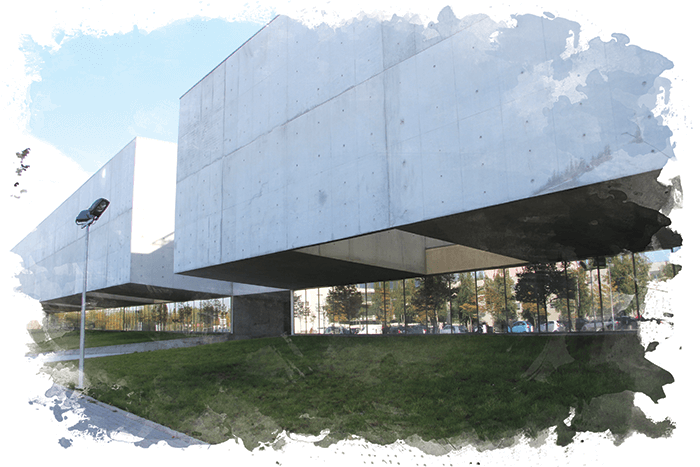
Though retirement from university work is on the horizon, surely you still have many years ahead in pathology. What are you planning to do?
I want to focus my efforts on the new institute that we have just opened in Porto. That’s the most important thing for me now: to further the fields of cancer (which will go on being my main interest); host interaction and response; and neurobiology and neurological disorders, which are the three key focuses of the institute. I will be happy if I can help build this new institute like I have done with IPATIMUP over the last 25 years.
How did it feel to be nominated #1 on The Pathologist Power List?
I was very, very happy. But I must confess – as I stressed previously, almost every person in Portugal has a cell phone, but I don’t. I would class myself as computer-illiterate. I always read The Pathologist, but in print, so I didn’t even realize the competition was happening. I got an email from Mike Wells, saying “Congratulations, Manuel, you won!” I didn’t know what he was talking about. It was a totally unexpected surprise!
References
- “The Power List”, The Pathologist, 13, 19–35 (2015).
- P Soares et al., “Braf mutations and ret/ptc rearrangements are alternative events in the etiopathogenesis of ptc”, Oncogene, 22, 4578–4580 (2003).
- J Vinagre et al., “Frequency of tert promoter mutations in human cancers”, Nature Comms, 4, 2185 (2013). PMID: 23887589.
- V Maximo et al., “Somatic and germline mutation in grim-19, a dual function gene involved in mitochondrial metabolism and cell death, is linked to mitochondrion-rich (hurthle cell) tumours of the thyroid”, Br J Cancer, 92, 1892–1898 (2005). PMID: 15841082.
- P Castro et al., “Pax8-ppar gamma rearrangement is frequently detected in the follicular variant of papillary thyroid carcinoma”, J Clin Endocrinol Metab, 91, 213–220 (2006). PMID: 16219715.
- Cancer Genome Atlas Research Network, “Integrated genomic characterization of papillary thyroid carcinoma”, Cell, 159, 676–690 (2014). PMID: 25417114.




